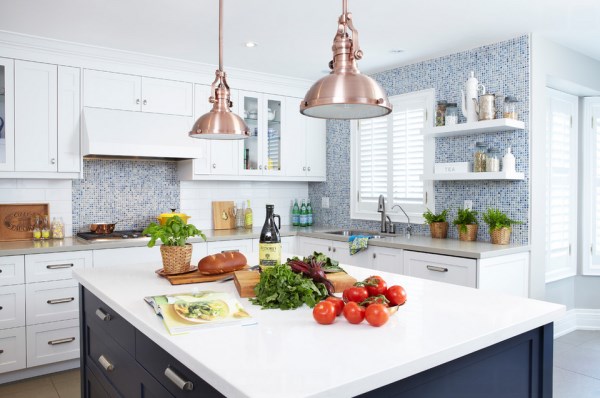A Healthy Kitchen
Preparing your own home-cooked meals is one of the best ways to ensure you are eating the freshest and healthiest of foods, but sometimes you just don't have the time or energy to cook up a meal.
Copyright (c) 2014 LifeWorks Integrative health
For many, the kitchen is the most frequently used room in the home. Not only is a kitchen used for preparing food, but it also may serve as an office, a place for the kids to color and even a place for the kids to do homework. With so much time spent in the kitchen, it's important to maintain a healthy kitchen; especially if you are looking to lose weight. A healthy kitchen can help you avoid the temptations of eating unhealthy. Here are some tips for making a healthy kitchen.
1. Do some meal preparation on Sundays so that you will have a fridge full of healthy snacks and meals for the week. When you are hungry, it may seem convenient to reach for a bag of chips or a candy bar just because they are already prepared for you. In a healthy kitchen, fruits and vegetables should be just as accessible as unhealthy snacks. To make them accessible, purchase plenty of fruits and vegetables at the beginning of the week. Spend some time washing, cutting them and portioning them into individual serving sizes. Use plastic storage containers or ziplock bags to store your fruits and veggies in your fridge. Place your prepared snacks in the front of your fridge; this way your eyes will be drawn to them when you open the fridge looking for a snack.
2. You can freeze fruits and veggies. Save money and stock up on fruits and vegetables for a healthy kitchen. Purchase fruits and vegetables in large quantities. Wash, cut and store your prepared fruits and veggies in the freezer. This way you'll always have fruits and vegetables on hand -- you can defrost them and eat them or toss them in a blender to make a smoothie. Did you know that fruits and vegetables can spend up to one year in a freezer without losing their quality?
3. Stock your new, healthy kitchen with smaller plates. This can be especially beneficial for anyone who feels the need to fill up the entire plate at a meal. A smaller plate can help you to control your portion sizes as well as your caloric intake.
4. Pack your leftovers up and place them in the fridge before sitting down to eat dinner. Not only do leftovers last longer the sooner you place them in the fridge, but you will be less likely to head back for seconds if they are already put away.
5. Say goodbye to unhealthy foods and say hello to a healthy kitchen. If your freezer is packed with ice cream and you have boxes upon boxes of cookies in the pantry, you are going to be much more likely to want to eat them. Toss out or give away the foods and snacks that you know are going to cause you a great deal of temptation.
Article Tags: Healthy Kitchen





0 Response to "A Healthy Kitchen"
Post a Comment